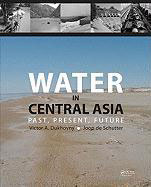ABOUT "IWRM-FERGANA" PROJECT
The Swiss Agency for Development and Cooperation has approved the credit proposal for the Interim Phase V of the IWRM-FV Project, which is to start on March 1, 2011 and will last until February 29, 2011.
The overall goal of the project is contribution to more secure livelihoods, increased environmental sustainability, and greater social harmony, through improved effectiveness of water resources management in the Fergana Valley. The overall goal of the project remains as significant as in the previous phases, too.
The goal of further project development is divided into two main objectives.
The objectives for the interim phase are:
1. To improve within the project area, the financial and economic viability of the IWRM institutions up to canal level, with a special focus on the WUA’s, and exit from part of the past activities which are not anymore priorities.
2. To ensure the long-term sustainability of the project IWRM approach by defining with the respective governments, visions on ways and means to integrate the new IWRM structures and set-up in the existing national water management systems, and on the approach to be applied for the small trans-boundary tributaries, from the perspective of possible replicating of the SDC approach at the national level.
This phase is proposed as a preparatory one for the main phase -VI of the IWRM Fergana Valley Project. In that sense, the phase will also help clarifying some issues and defining elements of the next water strategy of SDC in Central Asia.
WATER IN CENTRAL ASIA: PAST, PRESENT, FUTURE
On 27 January 2011, the book "Water in Central Asia: Past, Present, Future" (by Victor Dukhovny and Joop de Schooter) was released. The publication is a detailed reference on the past, present and future of water in Central Asia authored by two experts on water in this geographical area.

Taking a practical approach, the book unravels historical, socio-economic, and political issues that are relevant in this water-scarce, landlocked region. Well-illustrated and containing a wealth of original information on the area, it provides an exceptional overview and analysis of the role of water in Central Asia.
It includes data originating from Central Asia Regional Water Information Base (CAREWIB), on water and environmental issues, regional socio-economic and political facts and figures. The book is primarily intended for policy makers, planners, managers and scientists, but will also appeal to readers with an interest in water and environment issues around the world.
SOURCE OF PROSPERITY
Central Asia is the cluster of countries located in the basin of the "Great Aral Sea". It originates from the ancient civilizations of the IV-III millennium B.C. known as “Ariana” and is an important geopolitical centre today, where the USA, Russia, China, EU, Iran and India participate in the regional water game. The Aral Sea Basin has always been a subject of interest to outside powers as a target of travel or political blame. At the same time it was a source of prosperity and a place of work, love, history and strong cultural traditions for almost 100 million people. At present the Aral Sea Basin is shared by independent states with different interests but at the same time in need of close collaboration for their survival.
FRAGILE BALANCE
Much has been written about this region but few writers have discovered the deeper roots of the historical transformations that have caused the present situation of environmental degradation. The extremely arid character of the region is a cause of very sensitive natural and social conditions; a very fragile balance that is easily disturbed by any important impact from the outside or innovations from the inside. Only a thorough analysis of both the positive ambitions of the region and their possible negative consequences can provide the necessary understanding of why important development initiatives of the recent past have always produced the negative consequences as they did.
SHARE – MANAGING WATER ACROSS BOUNDARIES
SIC ICWC translated into Russian and published e-book "Share – Managing water across boundaries" (by C. Sadoff, T. Greiber, M. Smith and G. Bergkamp) on request of International Union for Conservation of Nature and Natural Resources (IUCN).

Transboundary rivers are increasingly being drawn upon to meet the needs of growing populations and economies. This increased pressure on the available water resources sharpens competing demands between countries, rural and urban areas, different user groups, and the river ecosystems themselves. The challenge is to balance these competing demands in a way that is equitable and sustainable for present and future generations.
Promoting peaceful cooperation and developing synergies between different users of water at all levels within and between states, is a global challenge. The importance of strengthening riparian relations and the need for cooperative management of shared water resources are growing, and all against a backdrop of considerable climatic uncertainty.
This book presents practical tools for conceptualizing and implementing cooperative, participatory management of shared water resources. It stresses the importance of information, communication, institutions and adaptability. It points to the range of benefits from water management and development that can be derived cooperatively, and must be shared equitably.
The lessons presented here provide valuable insights for states, civil society, and all of us who share and value water’s many attributes.
You may download this publication on CAWater-Info portal
|